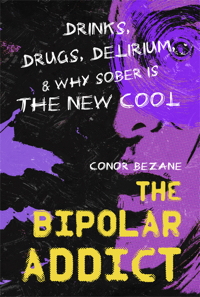
Photo by Conor Bezane
It was 50 years ago this month when police raided gay bar The Stonewall Inn in New York’s Greenwich Village and the LGBT community fought back for three nights of resistance. The event was the galvanizing foundation for the modern-day gay rights movement.
On the first anniversary of the riots — in 1970 — the very first gay pride parades took place when NYC hosted what they called the “Christopher Street Liberation Day,” and with Chicago, and Los Angeles holding similar parades. Half a century later, we still celebrate gay pride every June, a practice that is becoming mainstream across the country and the world. Even straight couples attend Pride, often with their young children, who happily wear rainbow-colored beads thrown from parade floats.
PROGRESS, SLOWLY BUT SURELY
Only four years after Stonewall, homosexuality was still listed as a mental illness, according to the DSM – the book used by psychiatrists and psychologists to diagnose mental disorders.
In October 1973, Australia and New Zealand became the first countries to recognize being gay as a natural aspect of human sexuality. That December, the U.S. followed suit, with the psychological community expunging the nomenclature of “sexual orientation disturbance.”
It was only 15 years ago that sexual conversion — or attempting to change a person’s sexual orientation with “therapeutic” techniques or religion (“pray away the gay”) — was first put to the test by doctors from the American Psychological Association, who finally “discredited” it.
A GAY HISTORY LESSON
It is amazing to me how quickly the gay rights movement and the normalization of gay culture has exploded in the past few decades. On October 14, 1979, there was a monumental gay rights rally — The National March on Washington For Lesbian and Gay Rights. Between 75,000 and 125,000 attended, fighting among other demands for a comprehensive bill in Congress to recognize gay and lesbian rights, and advocating for protection of gay youth from laws that discriminate, harrass or oppress them in jobs, schools or in social evironments. The March on Washington served to give the movement a national identity.
In the advent of AIDS in the 1980s, resistance groups like ACT UP – The AIDS Coalition to Unleash Power — fought to improve the lives of people with AIDS, since the gay population has been disproportionately impacted by the AIDS pandemic. Their “Silence = Death” pink triangle protest signs became iconic. ACT UP fought to gain greater access to AIDS drugs that were not yet approved by the FDA. They also sought greater awareness for HIV/AIDS.
But it was pop culture in the ’90s that marked the greatest turning point in the battle to win the hearts and minds of the American people. First, we saw gay main characters featured on television – on shows such as Will & Grace and MTV’s The Real World. Then Ellen DeGeneres came out, revealing on the cover of Time magazine: “Yep, I’m Gay.”
BIG VICTORIES
In 2010, President Obama finally repealed the “Don’t ask, don’t tell” policy that prevented LGBT military folks from revealing their sexual orientation or identity while serving their country. In 2013, after a Supreme Court victory, we won marriage equality.
And now we have a gay presidential candidate in Pete Buttigieg, who in the latest Iowa polls is in fourth place, with 14 percent of the vote. That’s with nearly two dozen candidates in the field. He is bested only by Joe Biden, Bernie Sanders, and, by a hair, Elizabeth Warren.
Now, gay pride parades take place throughout the world – from Africa to Asia to Europe to North and South America.
But even with all that progress, there’s still a ways to go, especially with regards to transgender rights. As of April, President Trump has banned transgendered members from serving in the military. Conservatives are hung up on allowing transgender people to use the bathroom that matches their gender identity. And a federal bill to protect all LGBTQ people from employment discrimination, The Employment Non-Discrimination Act, has stalled in Congress.
But now, as we pause on the eve of the 50thanniversary of Stonewall, let us reflect and be thankful for how far we’ve come. And let us look forward to a future where transgender Americans are allowed the same acceptance as their gay comrades.







